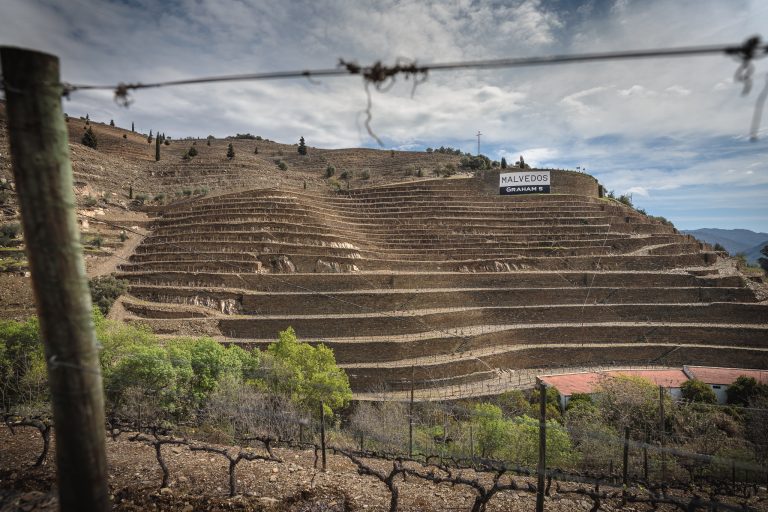Our website uses cookies in order to work correctly and to improve your browsing experience. By browsing this website, you agree to our Cookie Policy.
Modern Lagares
Up until the 1960s most Port was made in lagares, granite tanks in which grapes were trodden by people. Emigration from the Douro region and an ageing population prompted producers to adopt alternative vinification methods less reliant on labour. However, treading in lagares was maintained as far as possible because it produced excellent quality port.
During the 1990s, as labour shortages became more acute, our winemaking team examined ways of mechanising the treading process. We identified the characteristics of the traditional lagares that made such excellent wines and replicated those features, retaining the best aspects and correcting known limitations. One of the most important considerations was the shape of the lagar, which assured high skin-to-juice contact ratios due to the large surface area and shallow depth. The design of the modern, stainless steel automated lagares followed the same configuration as the traditional stone counterparts.
We trialed prototypes during 1998 and 1999 and we installed the first three fully operational modern lagares at the Quinta dos Malvedos winery in 2000. The new system rapidly proved its worth and in quick succession we fitted further modern lagares in our Cavadinha, Senhora da Ribeira and Bomfim wineries.
The modern lagares have multiple advantages: (1) dual treading and cap submersion capability; (2) high skin-to-juice contact ratios ensuring optimal macerations; (3) temperature and tread pressure control; (4) Hydraulic tipping ensures rapid running off and speedy turnarounds; (5) round-the-clock availability; (6) improved hygiene from stainless steel ; (7) ideal micro-oxygenation of the must; (8) low operating costs.
The modern lagares, conceived and developed in-house by our team have proven revolutionary and represent one of the most significant advances in Douro winemaking. Their success is reflected in the exceptional reviews and scores achieved by the Vintage Ports that we have produced since 2000.



